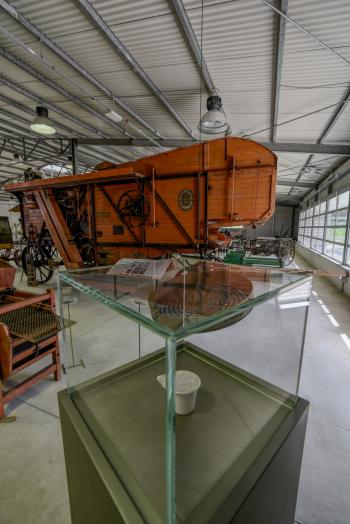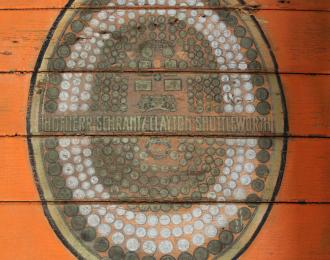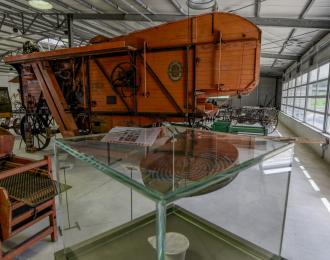Trebbia Hofherr Schrantz Clayton Shuttleworth (Threshing machine)
CAMS - Laboratory of Agricultural History

The threshing machine is the largest item in the Laboratory and for over a century symbolised one of the greatest advances in the mechanisation of agriculture. Threshing is the process of separating grain from non-comestible chaff and cereal stalks, one of the most demanding manual tasks.
The basic mechanism for modern threshing, a cylinder containing a rotating drum, was invented by a Scotsman Andrew Meikle in 1786. The first foreign threshing machines, of which the Hofherr Schrantz is a prime example, were brought to Italy in the late 19th century. The firm was founded in Vienna in1869 and in 1911 collaboration was begun with Clayton and Shuttleworth, a British firm which produced engines. One interesting feature of this particular machine are the decals on the side showing the gold, silver and bronze medals won during 19th century Universal Exhibitions for excellence in the quality of threshed grain.

